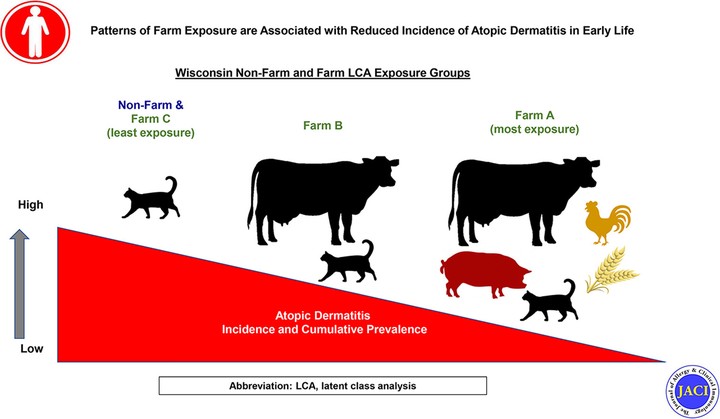Patterns of Farm Exposure are Associated with Reduced Incidence of Atopic Dermatitis in Early Life

Abstract
Background Farm exposures may reduce the risk of atopic dermatitis (AD) in children, but this is controversial and US data are limited. Objective This study was conducted to identify patterns of farm exposure in Wisconsin family farms that modify AD incidence and prevalence in early childhood. Methods Environmental exposures, health history and clinical outcomes were prospectively recorded for 111 farm families and 129 non-farm families enrolled in the Wisconsin Infant Study Cohort birth cohort study. Exposures from the prenatal and early postnatal (2-month) visits were evaluated together with parental report of AD diagnosis by a healthcare provider through age 24 months. Latent class analysis was performed with prenatal and early postnatal farm-exposure variables to assign farm children to three classes. Results Overall, children of farm families had reduced AD incidence (P=0.03). Within farm families, exposures including poultry (3% vs 28%, P=0.003), pig (4% vs 25%, P=0.04), feed grain (13% vs 34%, P=0.02) and number of animal species were inversely associated with AD incidence. Among the latent class groups, children in families with diverse or more intense farm exposures (Classes A and B) had reduced AD incidence, while low-exposure (Class C) infants had AD incidence similar to non-farm children. Conclusions Infants in Wisconsin farm families had reduced AD incidence, and patterns of farm exposures further defined AD risk. These findings suggest that exposure to diverse farm animals, feed and bedding during the prenatal period and in early infancy reduce the risk of early-onset AD, a phenotype associated with multiple other atopic diseases.